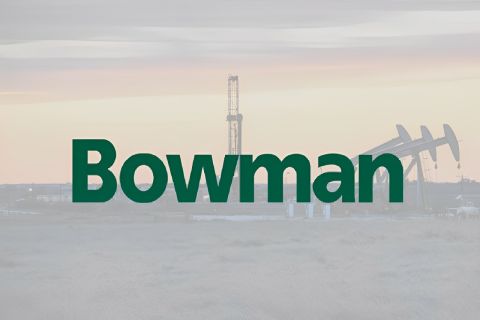Natural gas and natural gas liquid (NGL) prices took a slight step back this week at both Mont Belvieu and Conway as they moved in the opposite direction of West Texas Intermediate (WTI) crude prices, which remained above $100 per barrel (/bbl.).
The rail industry is being negatively impacted by these prices as some East Coast refiners are finding it more economical to import North Sea and West African crude at the expense of Bakken crude being transported by rail. As of press time, the spread between WTI and Brent crude is $3/bbl., which is small enough that the extra costs associated with rail transport is driving this domestic production out. It is also likely that as the spread between WTI and Brent narrows, WTI prices will fall and provide stronger economics for refiners to use Bakken crude shipped by rail.
While crude prices have benefited from geopolitical events in the Middle East along with backwardation that has caused Cushing inventory levels to quickly be worked off, it is anticipated that this will be a short-lived scenario. Refiners will be reducing their crude runs in the fall for normal maintenance, which is likely to see inventory levels creep back up.
Natural gas prices are already facing headwinds as summer temperatures are hitting normal levels in much of the country, which is decreasing cooling demand significantly. Prices fell 7% last week at both hubs with the Mont Belvieu dropping to $3.41 per million Btu (/MMBtu) and the Conway price dropping to $3.38/MMBtu.
The future for gas prices isn’t expected to markedly improve either. “Many investors see more pressure ahead for futures prices, with stockpiles comfortable, production still flowing at or near a record high and no extreme heat on the horizon to boost demand,” according to Hart Energy’s daily Commodities Report for August 1.
The good news for the NGL market is that the light side of the barrel continues to show improvements at both hubs as propane prices remain near their highs for the year thanks to increased liquefied petroleum gas (LPG) export capacity and demand.
While the price fell at both hubs, there was a tremendous amount of volatility this week, especially at Mont Belvieu, for propane. Prices fell 3% at both hubs with Mont Belvieu down to 93¢ per gallon (/gal) and the Conway price down to 88¢/gal. Both prices were the second-largest in the past 10 weeks at their respective hubs.
Ethane was the lone NGL to experience a price improvement at both hubs as they appear to have hit the floor in the past few weeks and are now rebounding. The Mont Belvieu price rose 2% to 25¢/gal, its highest level in nearly two months. The Conway price increased 6% to 23¢/gal, its highest price since the week of April 3 when it was 25¢/gal. The Midcontinent price increase, combined with the downturn in gas prices, resulted in the frac spread margin turning theoretically positive by the slimmest of margins for the first time in nearly two months.
The only other NGL to experience a price improvement at either hub was Conway isobutane, which rose 1% to $1.58/gal, due to an unplanned outage of ONEOK Inc.’s isomerization unit in the region. This outage has kept the Conway price above the Mont Belvieu price for the past seven weeks. The Mont Belvieu price, which has been negatively impacted by refiners focusing on summer-grade gasoline, fell 2% to $1.32/gal.
These prices resulted in the theoretical NGL barrel price falling 2% to $39.36/bbl. with a 1% gain in margin to $26.91/bbl. at Mont Belvieu. The Conway price fell 1% to $39.01/bbl. with a 2% gain in margin to $26.67/bbl. as prices are increasingly trading at a near equal value of late.
The most profitable NGL to make at both hubs remained C5+ at $1.72/gal at Mont Belvieu and $1.70/gal at Conway. This was followed, in order, by isobutane at 98¢/gal at Mont Belvieu and $1.24/gal at Conway; butane at 92¢/gal at Mont Belvieu and 91¢/gal at Conway; propane at 62¢/gal at Mont Belvieu and 57¢/gal at Conway; and ethane at 3¢/gal at Mont Belvieu and nil at Conway.
While cooling demand trailed off this week, it had been high enough this summer that storage injections were below normal levels. According to the U.S. Energy Information Administration’s most recent data available, storage levels rose by 59 billion cubic feet to 2.845 trillion cubic feet (Tcf) the week of July 26 from 2.786 Tcf the previous week. This was 12% below the storage level of 3.213 Tcf posted last year at the same time and 1% below the five-year average of 2.879 Tcf.
The National Weather Service’s forecast for this week anticipates cooler-than-normal temperatures in the Northeast and Midwest, which should significantly lower cooling demand and increase storage injections.
Contact the author, Frank Nieto, at fnieto@hartenergy.com
Recommended Reading
VTX Energy Quickly Ramps to 42,000 bbl/d in Southern Delaware Basin
2024-09-24 - VTX Energy’s founder was previously among the leadership that built and sold an adjacent southern Delaware operator, Brigham Resources, for $2.6 billion.
US Drillers Cut Oil, Gas Rigs for Third Week in a Row
2024-10-04 - The oil and gas rig count fell by two to 585 in the week to Oct. 4.
EY: How AI Can Transform Subsurface Operations
2024-10-10 - The inherent complexity of subsurface data and the need to make swift decisions demands a tailored approach.
Bowman Consulting to Manage, Monitor Delaware Basin Wells
2024-10-14 - Bowman Consulting Group’s scope of work includes conducting detailed field surveys of above-ground infrastructure assets across well sites of up to to 8 acres.
E&P Highlights: Oct. 7, 2024
2024-10-07 - Here’s a roundup of the latest E&P headlines, including a major announcement from BP and large contracts in the Middle East.
Comments
Add new comment
This conversation is moderated according to Hart Energy community rules. Please read the rules before joining the discussion. If you’re experiencing any technical problems, please contact our customer care team.




